

Ben Zachariah
Move over, Patrol: New-era Ford Maverick SUV imagined
7 Hours Ago
The Wrangler remains an icon and a master off the beaten track, but can it justify a recent $12,000 price increase? We're not sure...

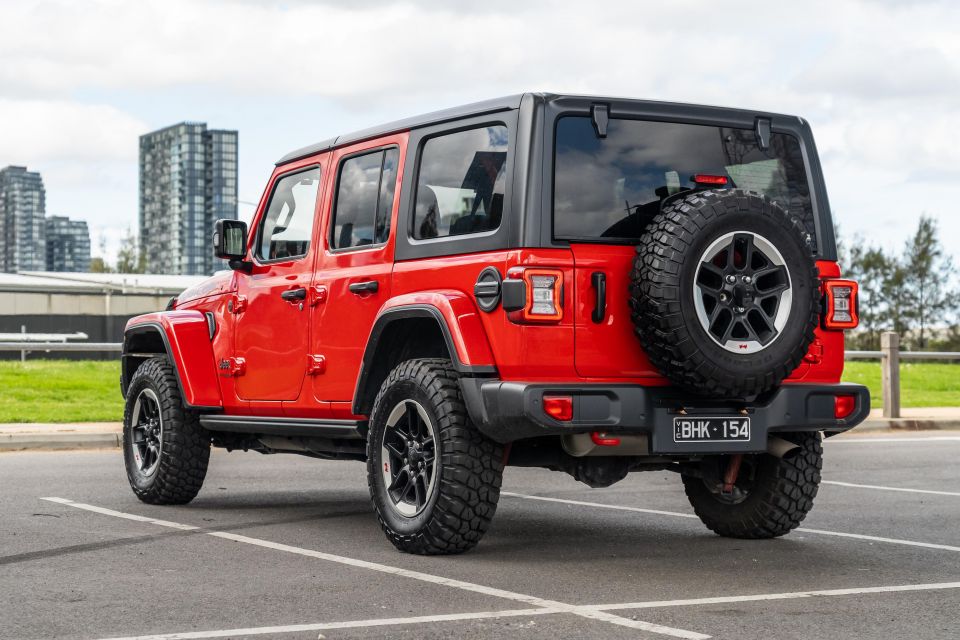

Where expert car reviews meet expert car buying – CarExpert gives you trusted advice, personalised service and real savings on your next new car.
Love it or hate it, the Jeep Wrangler is an icon of the automotive world.

Just like the Porsche 911, Volkswagen Golf, Mercedes-Benz G-Wagen and Land Rover Defender, the off-roader has universal recognition thanks to its heritage and hallmark design.
While the Wrangler nameplate only dates back to the mid-1980s, it’s a direct descendent of the wartime Jeeps and Willys Jeeps from the 1940s. Even today, its boxy, upright design stays true to its ancestors.
But Jeeps, including Wranglers, are driven predominantly in town these days, irrespective of the vehicle’s extensive list of off-road-ready features and specifications. It’s as much a fashion statement as it is a hardcore 4×4.

There’s also the four-door Wrangler Unlimited, which trades the two-door body for a more practical five-door layout with more space for people and stuff, pitched at the types that love the Wrangler’s design but need room for family, friends and pets.
So while this top-spec 2023 Jeep Wrangler Unlimited Rubicon should be more than capable off the beaten track, how does it compare to more modernised competition as an all-rounder?
Note: The vehicle we had for testing was an MY22 example. Some minor changes have come into effect with MY23 which we’ll detail in the review
A lot… especially after August 1, 2022.
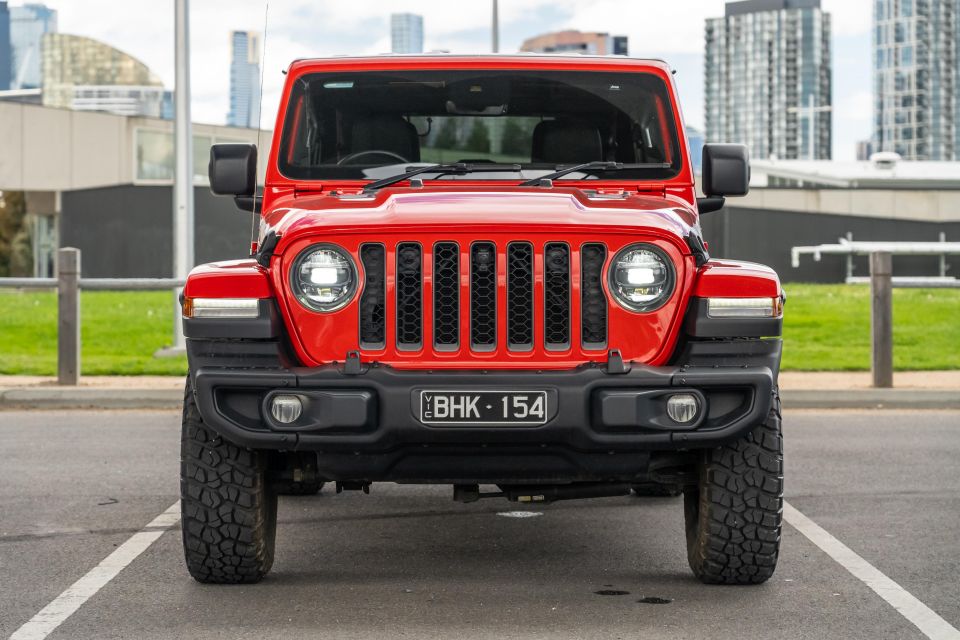
Pricing for the Wrangler Unlimited Rubicon went up by $12,000 (!!) during the third quarter of last year, with Jeep citing increases in supply chain costs as the culprit for such a hefty mark-up.
So now, you’re looking at a base price of $90,450 before on-road costs for the model you see on test here.
“The recent pricing actions are mainly prompted by a convergence of global market forces, such as the rising cost of raw materials and freight, or semiconductor shortage, which impact the overall industry,” said a spokesperson for Jeep Australia following the price increases.
“We continue to work with our vendors and dealers to minimise customers from any negative impact as much as possible.”
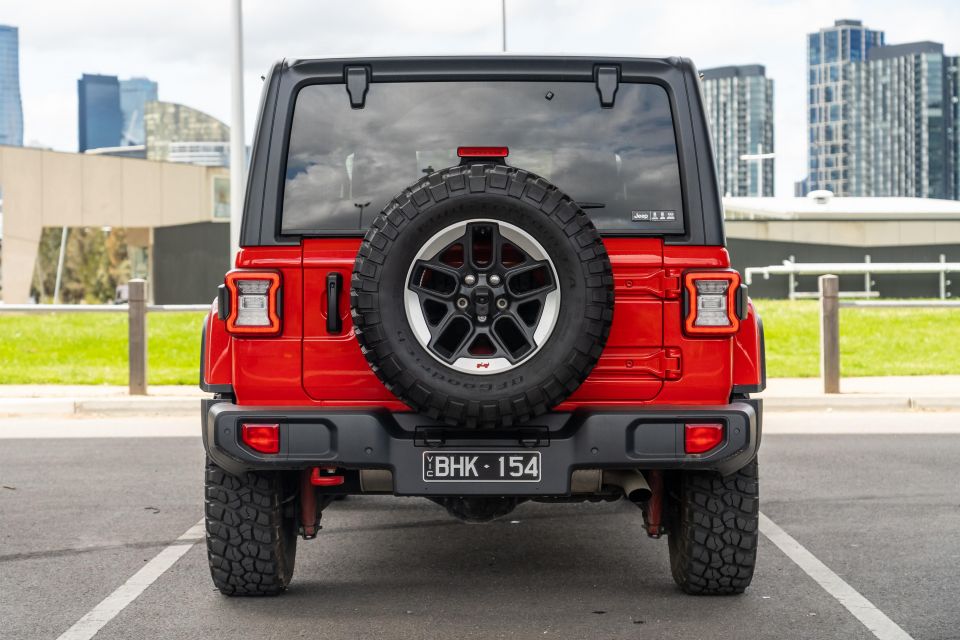
That new positioning puts the Wrangler Unlimited into the territory of the Land Rover Defender, which in the equivalent 110 body variant starts from $84,350 plus on-road costs.
Admittedly, you’ll need to add a few options to match the spec of the Jeep, likely seeing the Defender hit six figures.
Regardless, that’s alot of cash for an off-roader that hasn’t seen any major changes with its price bump – and especially when its price started with a ‘7’ prior to August 1, 2022.
Other than the Land Rover Defender, rivals for the Wrangler Unlimited Rubicon include the GWM Tank 300 Ultra Hybrid (from $60,990 drive-away), and the Toyota LandCruiser Prado Kakadu ($88,998).
You’ve also got the hotly-anticipated Ineos Grenadier Station Wagon within striking distance, which in Base specification kicks off at $98,000 before on-roads.
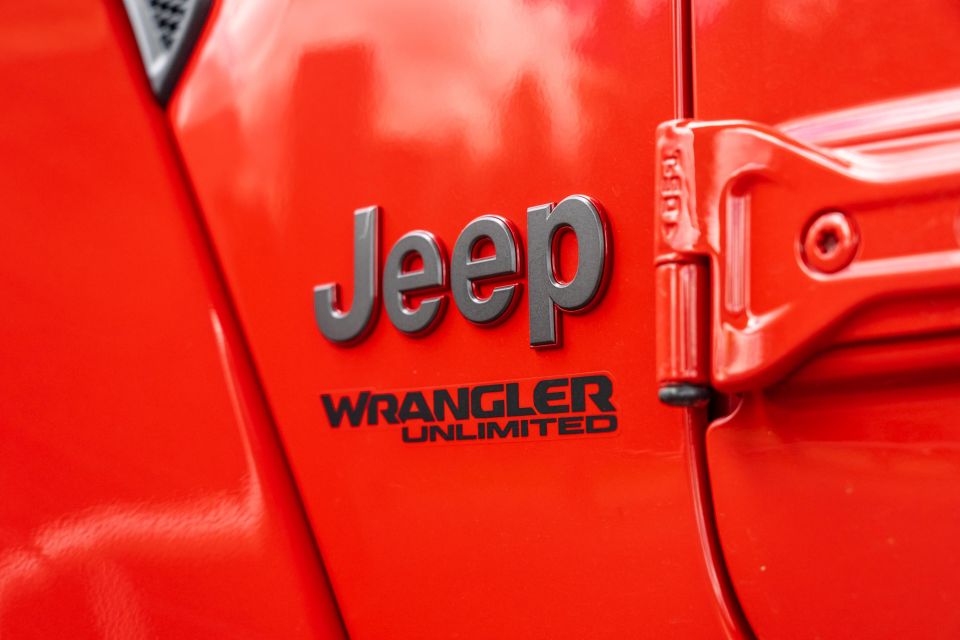
2023 Jeep Wrangler pricing:
Prices exclude on-road costs
Buy your new car without the stress. It's fast, simple and completely free.

Great service from Travis and team, second time I have used this business would not hesitate to recommend them to anyone
Craig C.
Purchased a Ford Ranger in Sunshine Coast, QLD
CarExpert helped Craig save thousands on his Ford Ranger, now let us save you on your next new car.
Find a dealA bit of a mix of old- and new-school.
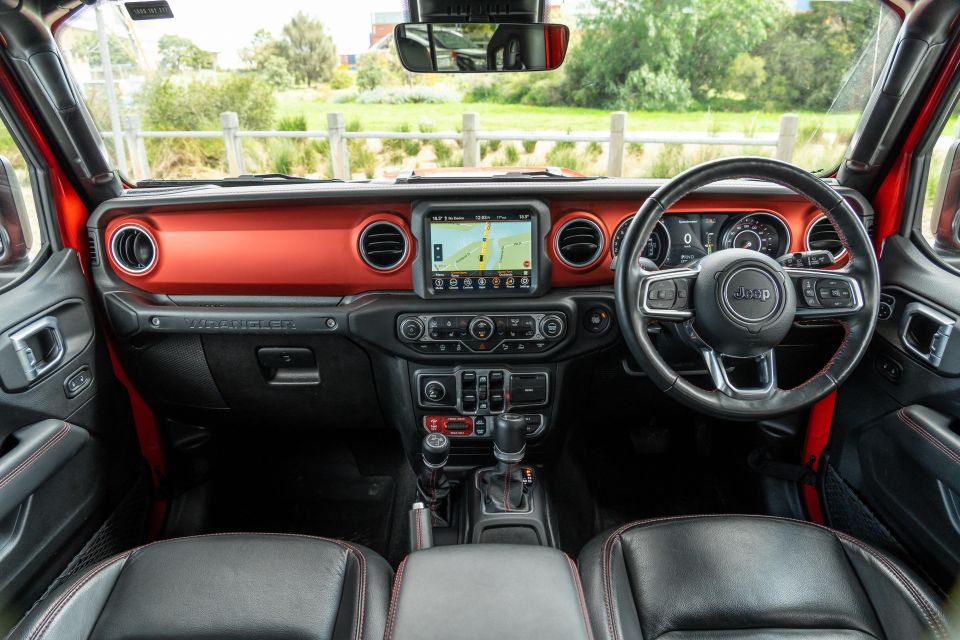
Like the exterior, the Wrangler’s cabin takes a very upright and utilitarian approach with a big splash of colour.
It has a very classic layout for the dashboard, with conventional analogue gauges, a square touchscreen integrated into the fascia, and a heavy helping of buttons and switches. No capacitive nonsense here.
Everything has a chunky, mechanical feel to it, which a refreshing in 2023.
Although the removable roof and door trims can be a little squeaky, the Wrangler’s cabin is actually solidly screwed together otherwise – though I really don’t like the brittle stalks the company uses, they just feel nasty.
Storage is limited to small cupholders between the the front seats and a pretty generous cubby under the centre armrest. Given the doors are removable, storage is limited to nets lower down, which means heavier items will either move around if they can’t be secured or might even fall out – like my big 1L water bottle did.
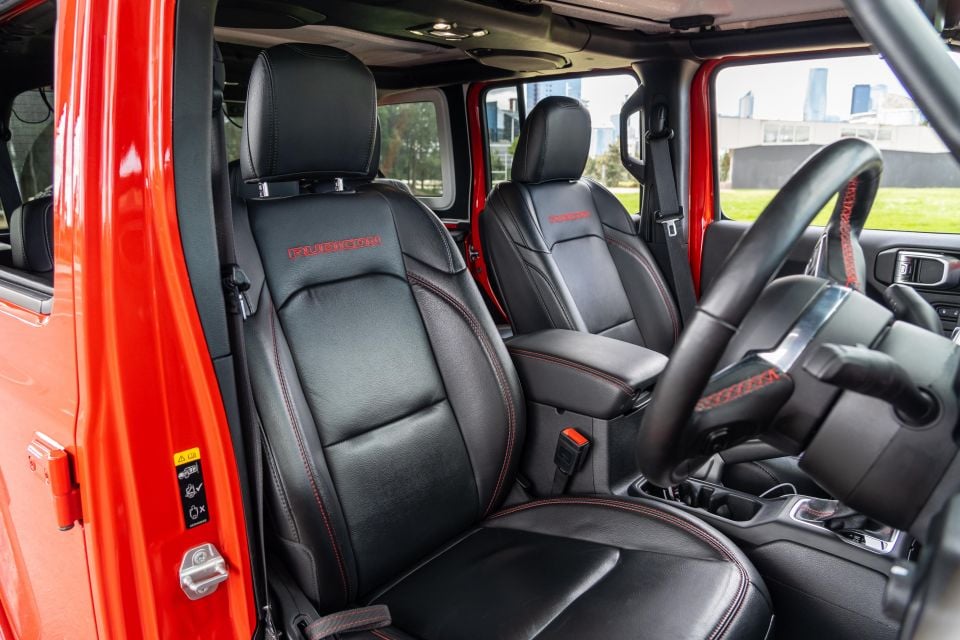
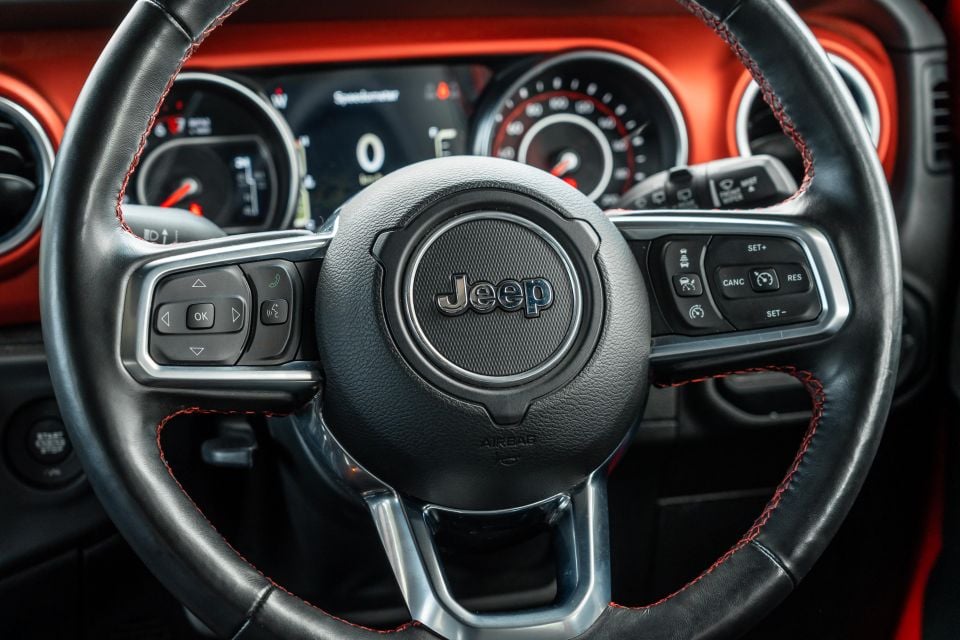
The front seats are perched high, giving you a commanding driving position as you’d expect, though it’s still a little difficult to see over the Wrangler’s long bonnet, which also has a hefty steel bumper lower down – that’s where the optional front-facing off-road camera comes in handy.
Despite the $90,000 price tag, adjustment for the front seats is all manual, but with that said it’s in line with the Wrangler’s rugged, old-school theme.
There’s a good range of adjustment, all things considered. I found a comfortable, if lofty perch, which suited my 6’1 frame.
I really like how the leather-trimmed steering wheel (leatherette for MY23) looks and feels, and the instruments incorporating analogue gauges and a 7.0-inch supervision display are nicely legible and have graphics and motifs – there are little Wrangler graphics scattered throughout the interior and exterior if you like a good Easter Egg.
The only other thing I’d note is Jeep’s unusual approach to the steering wheel controls. Instead of paddle shifters you have the volume and skip controls as toggle switches behind the wheel, which can take a little getting used to.

Central to the dashboard is an 8.4-inch touchscreen running Stellantis’s Uconnect 4 interface, common to the brand’s previous-generation models – the Compass and Grand Cherokee have moved to Android-based Uconnect 5 software.
While it’s getting on a bit, the infotainment unit is well featured and the 4×4-themed graphics are a nice touch. There’s embedded navigation, AM/FM/DAB radio tuners, Bluetooth phone and audio streaming, as well as wired Apple CarPlay and Android Auto.
Everything works as you’d expect, and the interface is pretty responsive. The off-road menus were a particular highlight, showing you all sorts of information on the go when you’re hitting the bush.
Another handy feature is the hard shortcut to the front-facing camera, which is quick to boot and high resolution. It’s a similar story for the reversing camera, which is handy given the Wrangler’s big and boxy body and flared arches.
Another funky design element are the window switches located on the centre stack on the dashboard. I can’t tell you how many times I went for the driver’s door for the windows – but you get used to it. The fat grab handle ahead of the passenger is another off-road-ready touch, and helps when climbing in and out, or when the terrain gets a little rough.
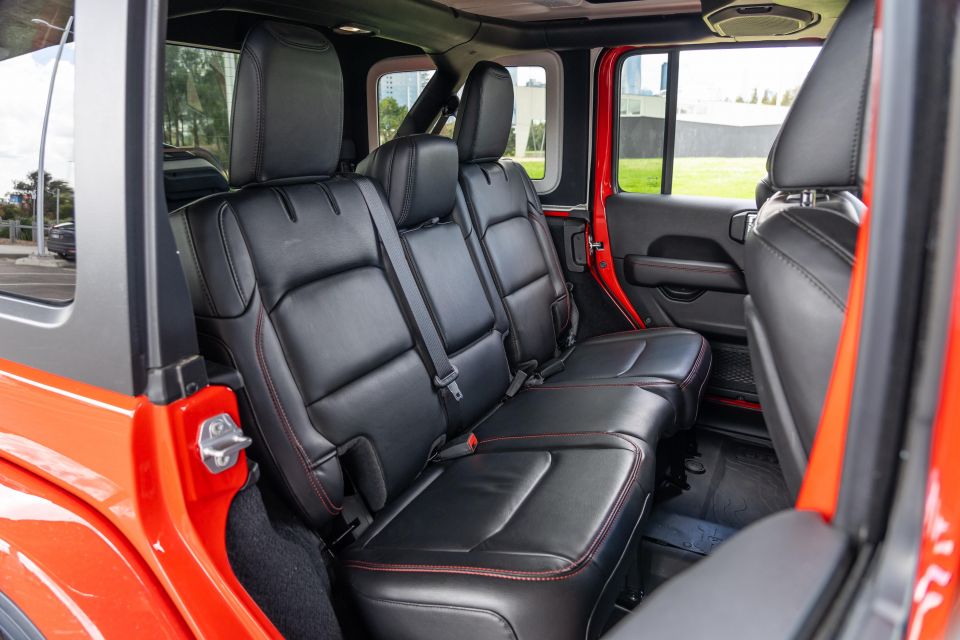
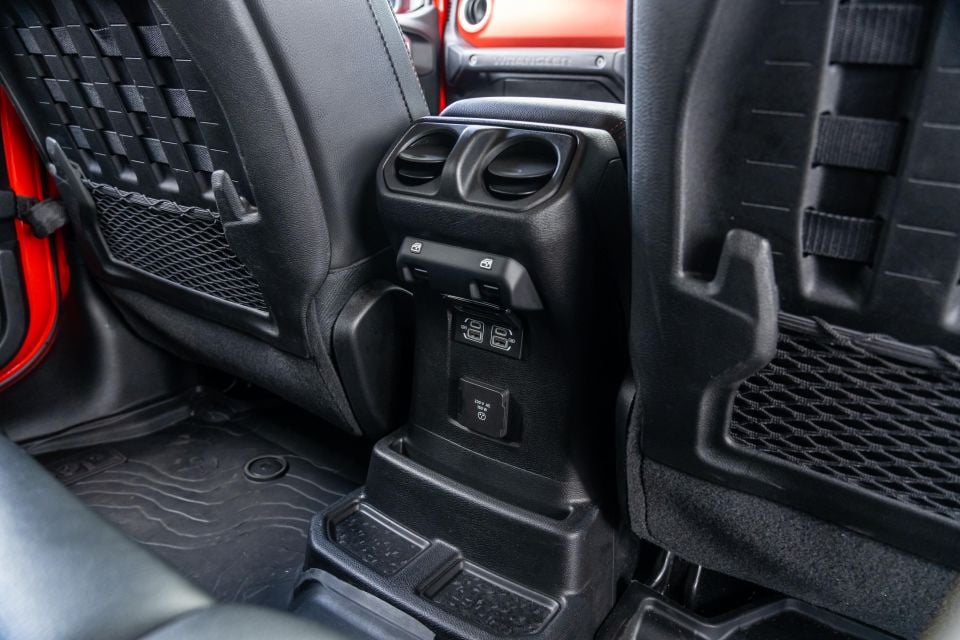
Opting for the Unlimited gets you an extra set of doors and a massive increase in wheelbase – a whole 549mm extra to be exact. That means the second row is quite spacious.
The boxy body means there’s heaps of headroom even if you’re above average height like myself, and there’s good leg-, knee-, and toe room even with the high floor. Big, square windows make for excellent outward visibility, and there’s a range of amenities for rear occupants.
Rear air vents, window switches, USB-A and USB-C outlets, and a 230V AC outlet all live behind the centre console. There are also net pockets behind the front seats, and a fold-down centre armrest.
You can also fit ISOFIX child seats on the outboard positions, though parents considering the Wrangler Unlimited as a rugged family car should note there’s no airbag coverage in the second row. More on that further down.


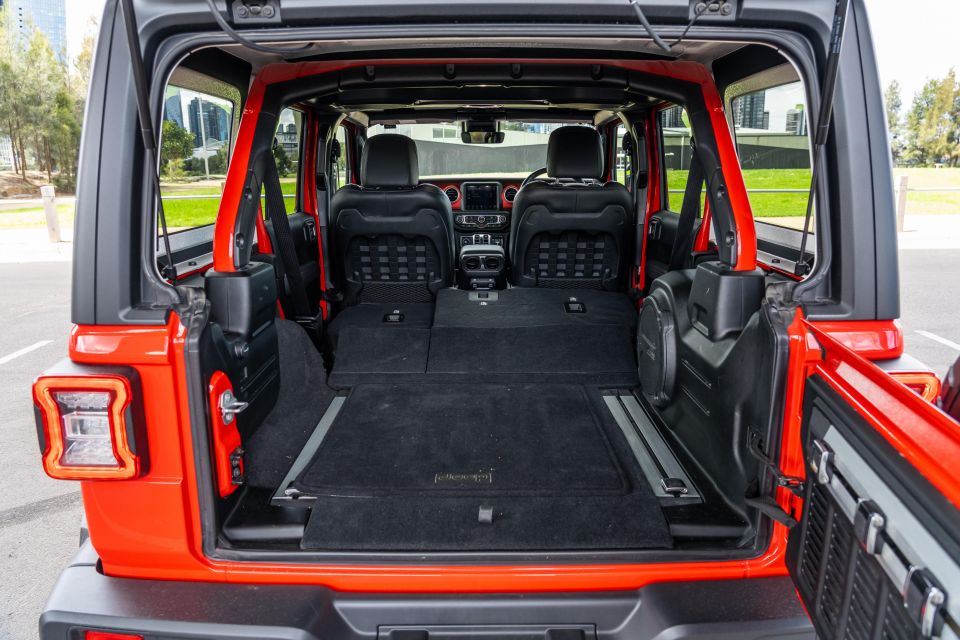
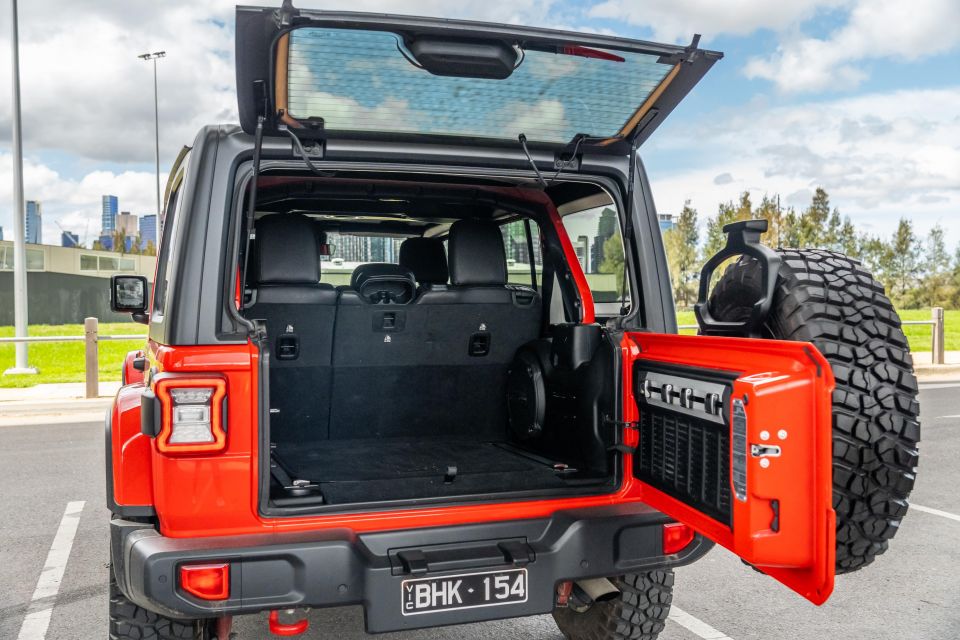
The Wrangler Unlimited’s added length also translates to more boot space, though Jeep doesn’t actually quote a volume in either five-seat or two-seat configurations.
What I can tell you is that the space itself is nice and square, with tie-down loops and rails on hand to secure nets, hooks and the like. There’s also a 12V power outlet in the luggage area to complement the one up front.
It’s accessed via a split tailgate which reminds me of my 2000 Honda CR-V, and the body section is quite heavy because of that chunky full-size spare attached to the rear.
You also have to open the lower section to access the glass hatch, which would be far more practical if it were the other way around – but I understand that’s more or less due to the removable roof design.
While many rivals utilise turbocharged petrol or diesel power, the Wrangler line-up uses a 3.6-litre naturally-aspirated V6 petrol engine.
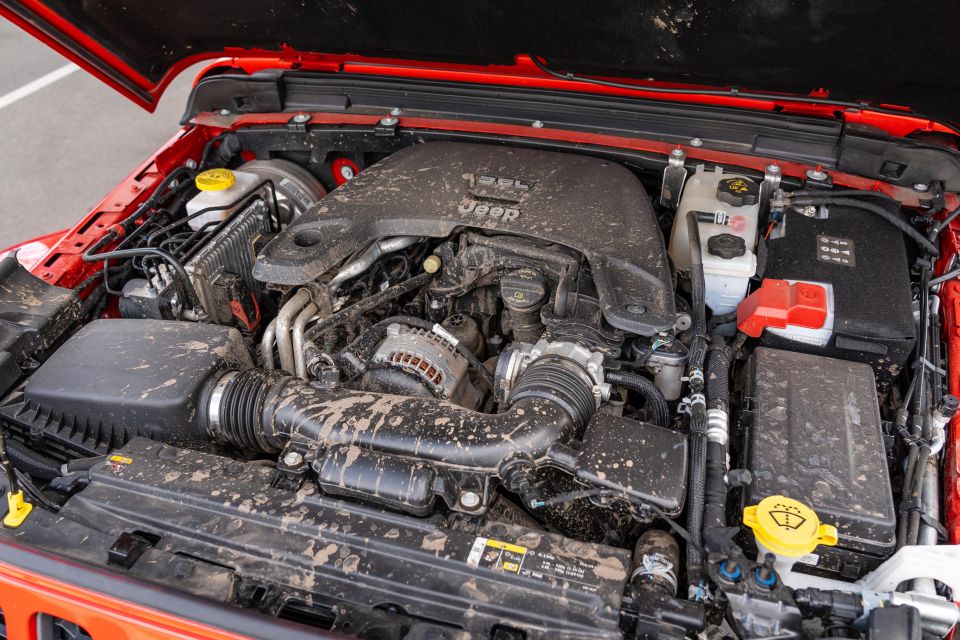
The venerable Pentastar produces 209kW (6400rpm) and 347Nm (4100rpm), sent to the brand’s Rock-Trac active on-demand 4×4 system with 4WD High Auto mode in Rubicon spec via an eight-speed automatic.
Jeep claims the Wrangler Unlimited V6 can accelerate from 0-100km/h in 7.9 seconds (0.4s slower than the two-door), and hit a top speed of 180km/h.
As for fuel economy, the Wrangler Unlimited Rubicon quotes combined efficiency of 10.3L per 100km, which is about half a litre up on the Night Eagle and Overland versions due to the heavier-duty all-terrain tyres.
The fuel tank measures 81 litres in capacity, runs on regular 91 RON unleaded, and the V6 engine is homologated to Euro 5 emissions standards. Emissions are rated at 239g/km for the Rubicon.
Tare weight for the Wrangler Unlimited Rubicon is quoted at 1992kg, Gross Vehicle Mass (GVM) is 2562kg, and maximum towing capacity for the Unlimited range is 2495kg with a max download of 250kg. Gross Combined Mass (GCM) is 4808kg in Rubicon spec.
Don’t expect the Wrangler to drive like a regular unibody SUV.
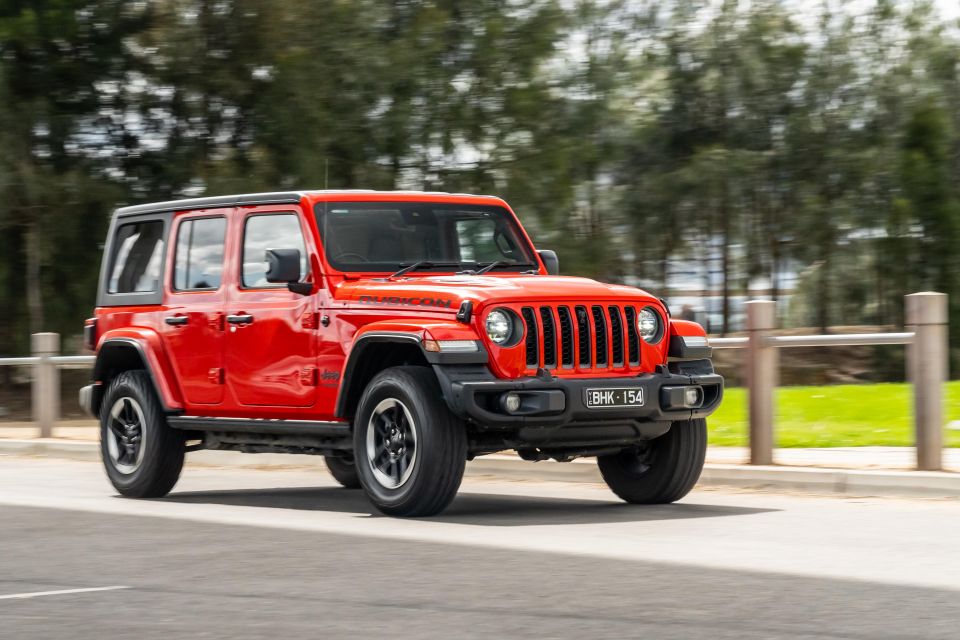
While there’s something refreshing about something so mechanical and workmanlike, if that’s your thing, driving the Wrangler Unlimited in town is a bit of an exercise.
The driver controls are on the heavier side and there’s a vagueness to the front end, not helped by the fact the front wheels seem to be constantly bumped off course by changes in the road surface or weather conditions. In 2WD High the rear end can kick out too if you apply throttle too quickly – you can put it in 4WD High Auto to mitigate this.
With that said, the feel through the steering wheel is actually not bad, and there’s a quickness to the rack that reduces the feeling of heft – keep in mind you’re piloting a 4882mm long and 1894mm wide high-riding truck.
There’s also a lot of noise. Every control has quite a mechanical clunk to it, and there’s not a whole lot of insulation thanks to the removable roof and doors – you feel like you can hear everything going on around you.
It’s the same for the engine, which while offering a brassy V6 note, is quite vocal in the cabin.
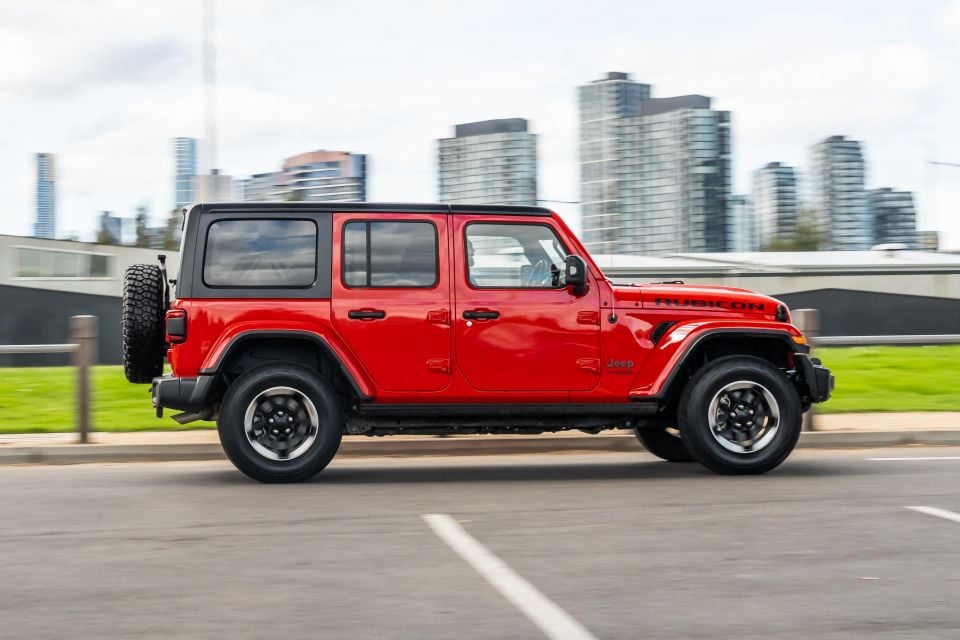
Where expert car reviews meet expert car buying – CarExpert gives you trusted advice, personalised service and real savings on your next new car.
Power delivery is smooth and linear, however, and the eight-speed automatic does an excellent job keeping the V6 on the boil when you need it. You also avoid the laggy nature of turbocharged engines with its free-revving, naturally-aspirated nature.
The Wrangler comes fitted with idle stop/start technology though, so when you’re waiting at the lights you can sit in silence while you await the next green.
The ride is a bit of a mixed bag on the road. It feels quite firmly sprung, and isn’t equipped to deal with the lumps and bumps of city life, and you get flexing and squeaking from the roof and pillars when you hit a bump.
These traits are only amplified once you hit the open road.
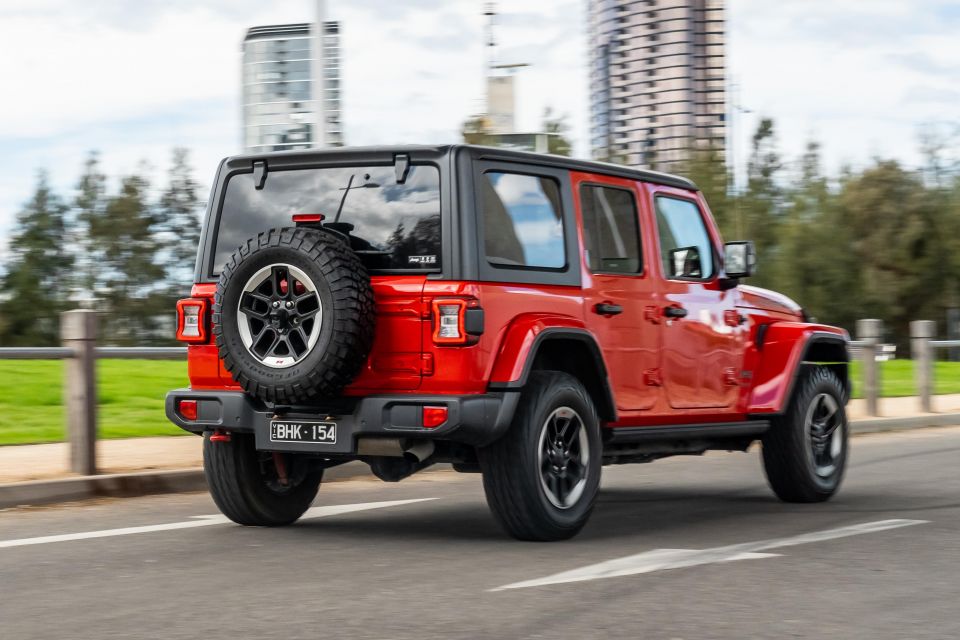
While the big footprint and hefty proportions make the Wrangler feel quite substantial at all speeds, the vagueness at the front end and lack of cabin insulation make for a pretty droney and hands-on highway drive.
The front wheels need constant correction to stay on the straight and narrow, and there’s no lane-keep or lane-centring assistance to help with this.
The echoey cabin is only more evident on the freeway, particularly on coarse-chip country roads, with wind noise coming off the upright pillars and road noise from the all-terrain tyres booming through the cabin.
It’s definitely a far cry from the laborious task of piloting an older Wrangler, mind you, but the current one is feeling quite off the pace compared to rival 4x4s.
At least the adaptive cruise control works as you’d expect, and it was surprisingly helpful on busy freeway commutes into work. It’ll come to a complete stop but won’t re-engage with a traffic jam assist-style function, which is a shame when numerous rivals offer semi-autonomous-capable systems.
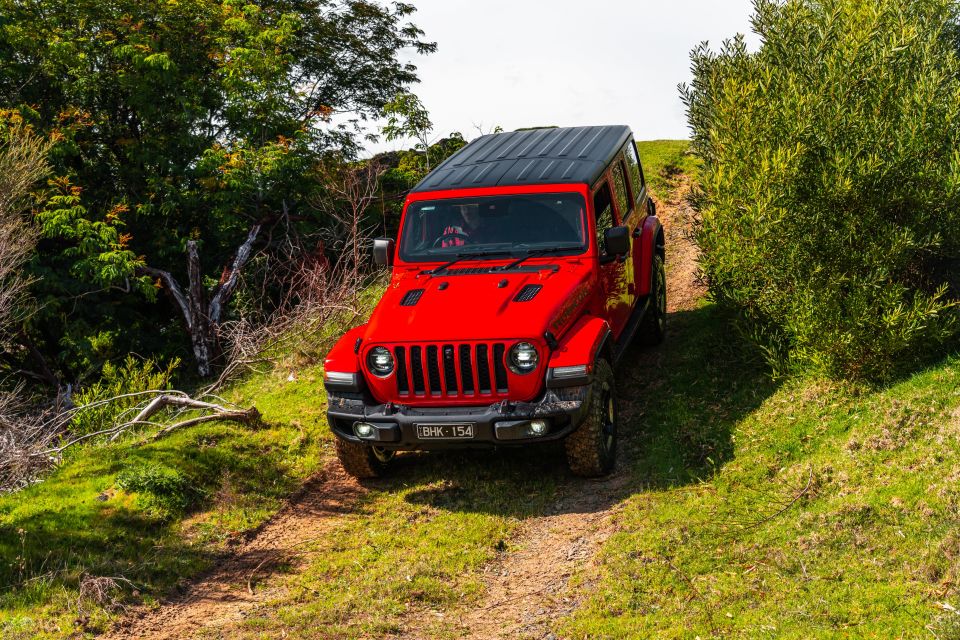
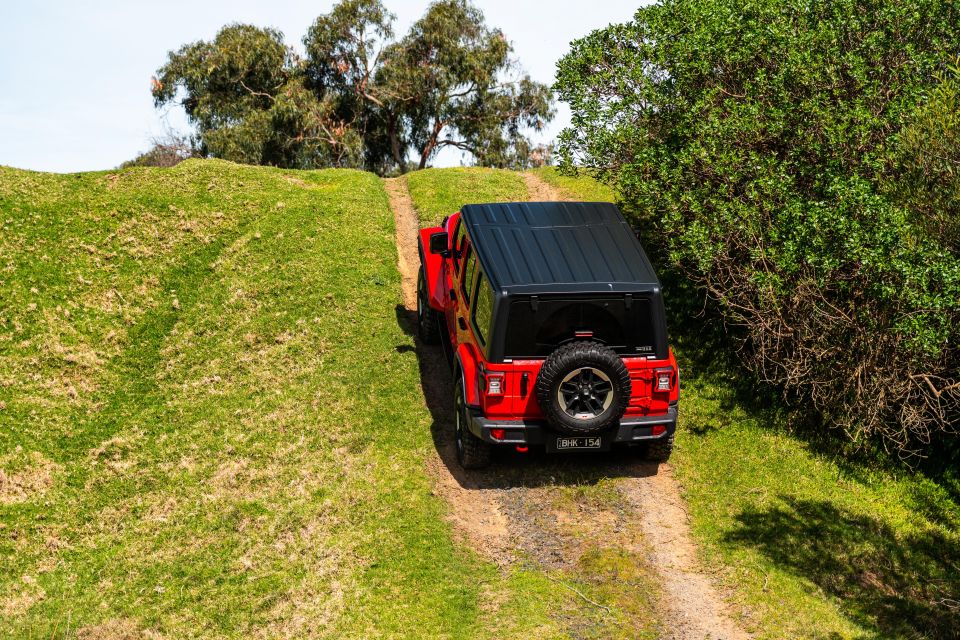
Once you get the Wrangler off the black stuff, however, it really starts to shine.
I took the Rubicon through all the tests we use on our YouTube channel, and with a relatively inexperienced off-roader like myself at the wheel, the Wrangler ate it up and left zero crumbs.
Grip on the hillclimb was excellent, as was the hill descent control on the way down. It barely slipped through any of the muddy sections and the optional front-facing camera as part of the Trail-Ready Package ($3835) made forward visibility that much better when rolling over the crest and down the descent given the tall, boxy proportions.
The Wrangler has 2WD High, 4WD High Auto, 4WD High, and 4WD Low modes for its selectable all-wheel drive system, and the Jeep was more than capable of tackling everything in 4WD High.
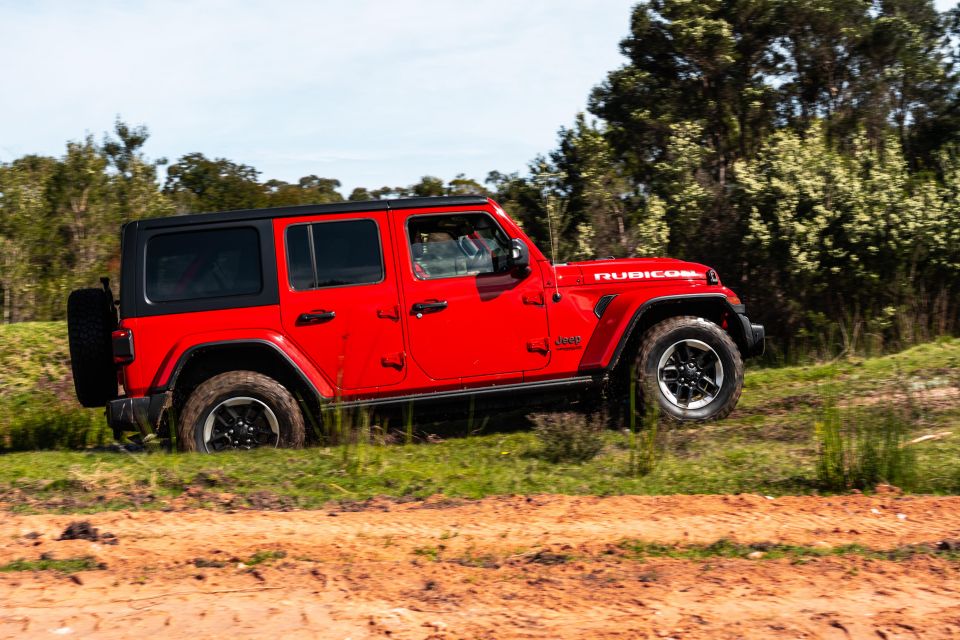
Through the offset moguls there was excellent wheel articulation as you’d expect, with the Wrangler able to keep pretty consistent contact with the ground.
Running clearance in the Rubicon is a lofty 252mm, which is 10mm more than the Unlimited Overland and 20mm higher than the Night Eagle.
As you can see from the images, even through deeper muddy puddles and water a deep water crossing, the Wrangler’s painted bits barely touched any dirt.
While we’re on the topic of specs, the approach, departure and break over angles for the Rubicon are quoted at 36.5 (41.7 with steel bumper), 31.9 and 21.2 degrees respectively. Jeep also quotes a wading depth of 760mm across the range – our water crossing obstacle was sitting at about 600mm when we tested, and the Wrangler had no issues.
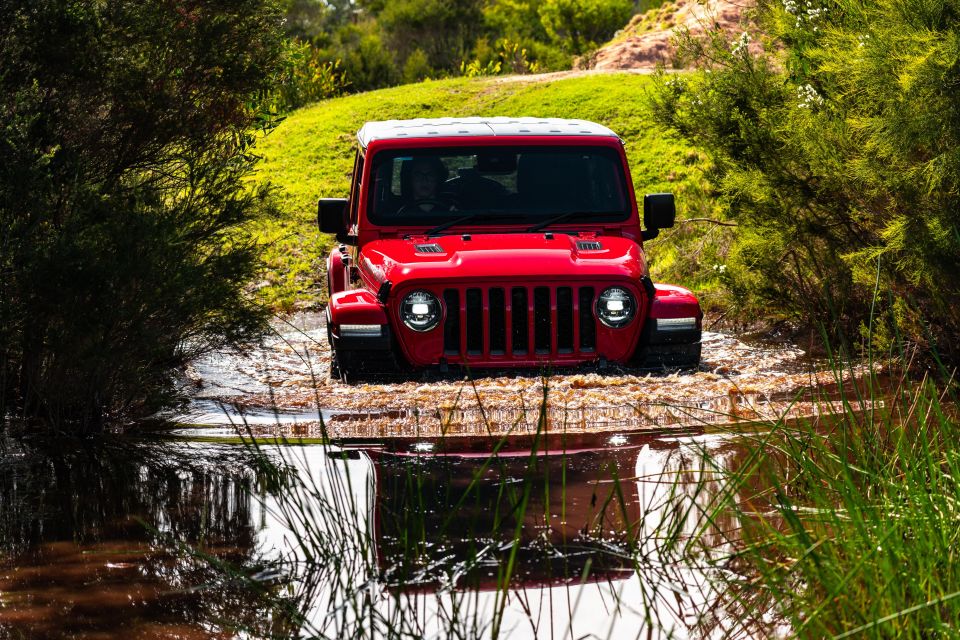
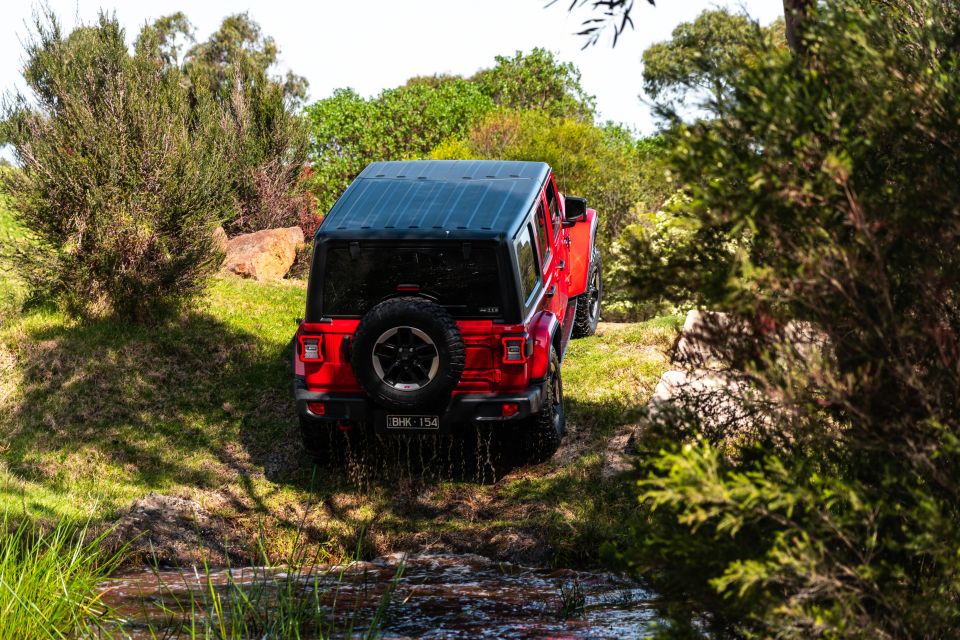
While they’re slightly different vehicles, we put the related Jeep Gladiator ute through its paces on tougher off-road obstacles during our recent 12-vehicle Ute of the Year comparison.
It passed the flex test and when dropping into the offset moguls showed off how good its axles are at dropping into holes, which enabled it to easily clamber out.
It actually walked up Gravel Mountain in low-range with just the rear diffs locked. Naturally, Paul made another run with the front diff locked and sway bar detached, as well as the Off Road Plus traction control mode just for fun, as you can watch.
“Next level stuff,” he said.
You can watch our YouTube video here.
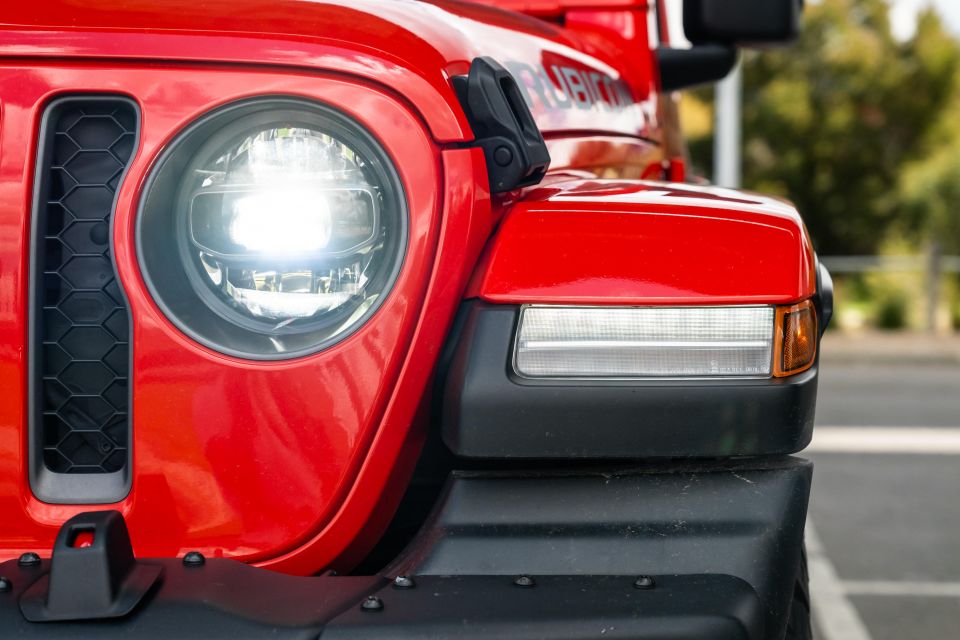
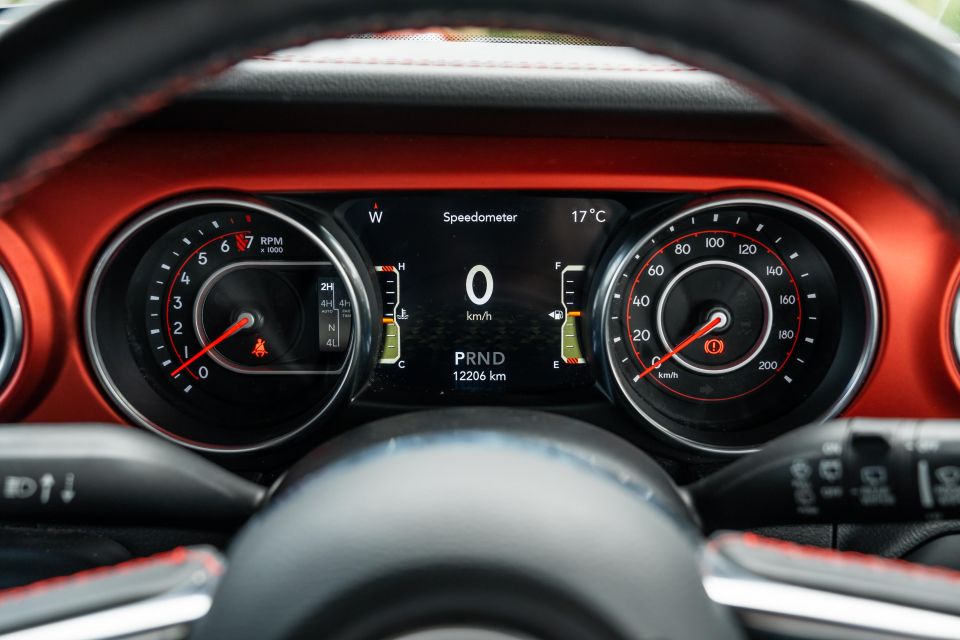
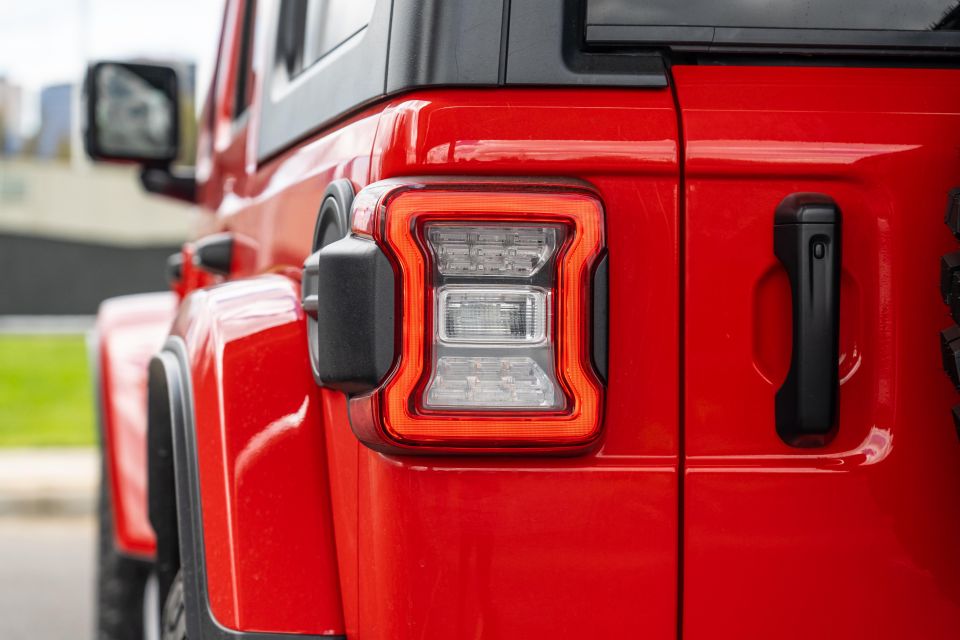

Wrangler Unlimited Night Eagle highlights:
Wrangler Unlimited Overland adds (over Night Eagle):
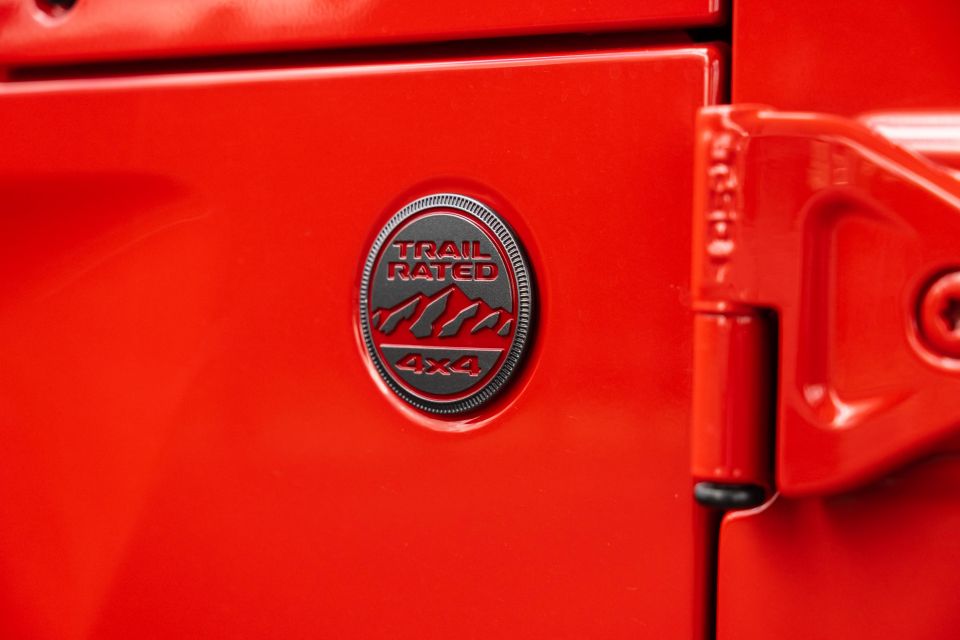
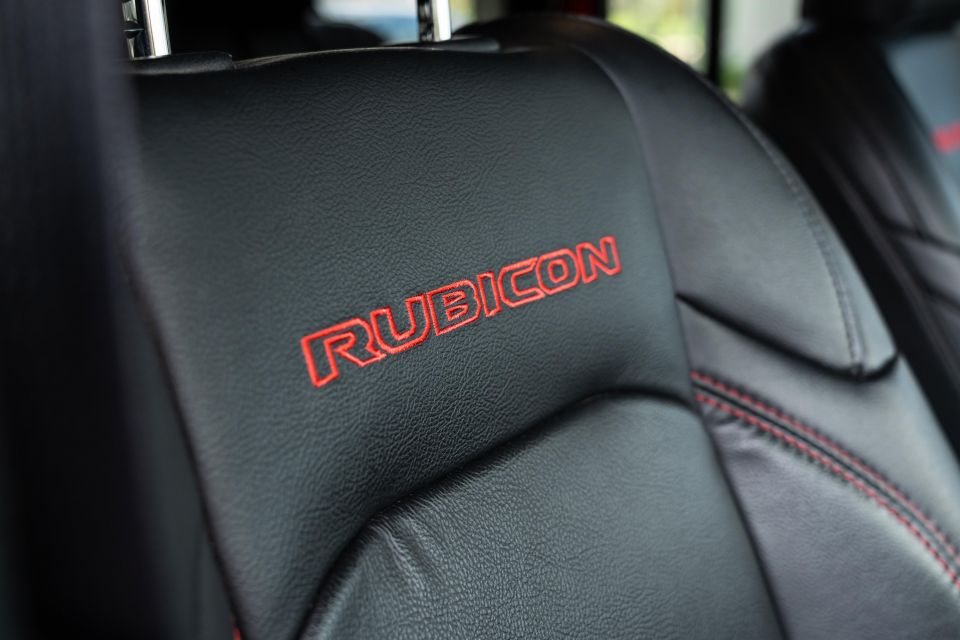
Wrangler Unlimited Rubicon adds (over Night Eagle):
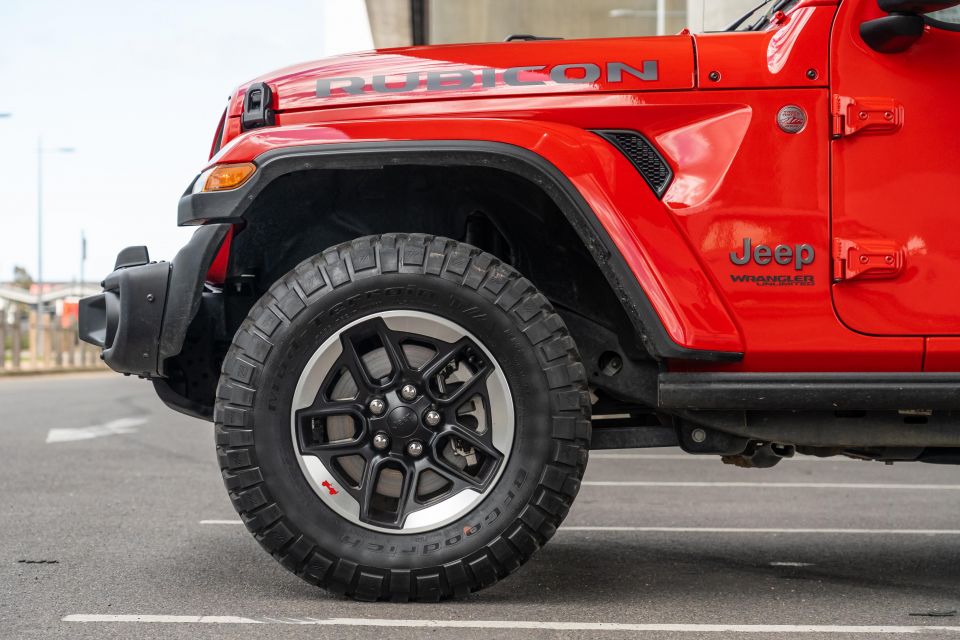
Trail-Ready Package: $3835 (Rubicon)
Rubicon Premium Package: $3835 (Rubicon)
Sky-One-Touch Premium Package: $7735 (Rubicon)
Sky One-Touch Power Top: $6450 (Overland)
Note: The optional 17-inch wheels shown on our MY22 are a different design to the MY23 version. Our test vehicle’s painted wheel flares and black roof are also no longer available as a combination for MY23 Wrangler.
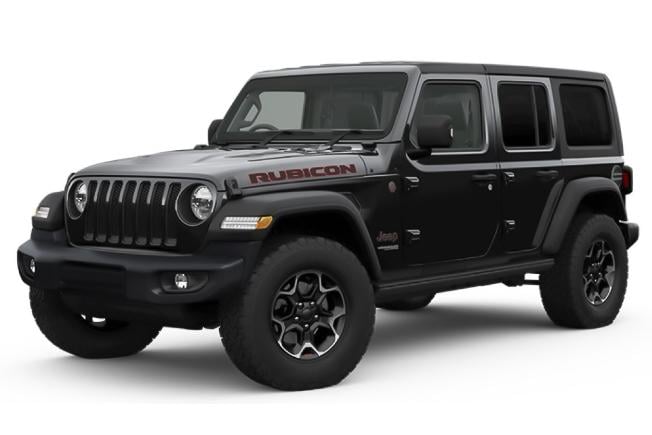
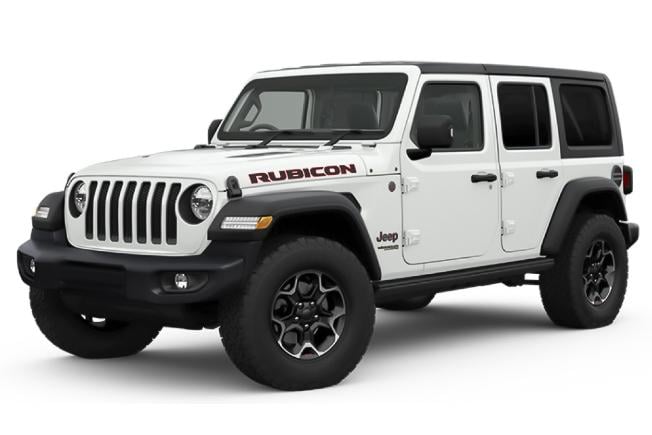
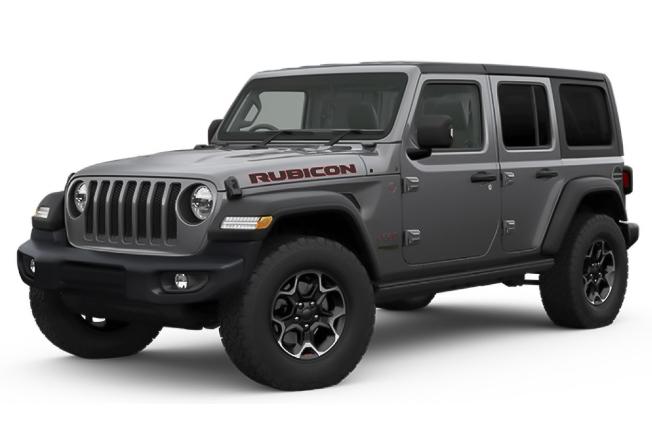
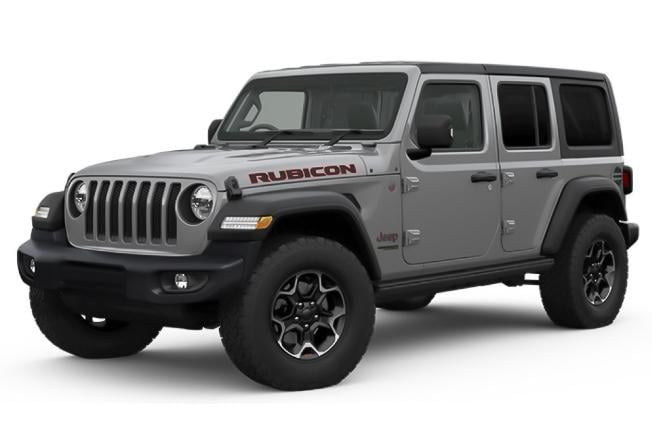
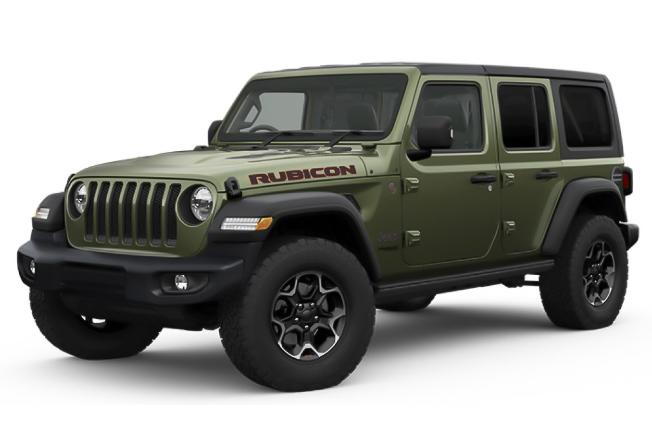

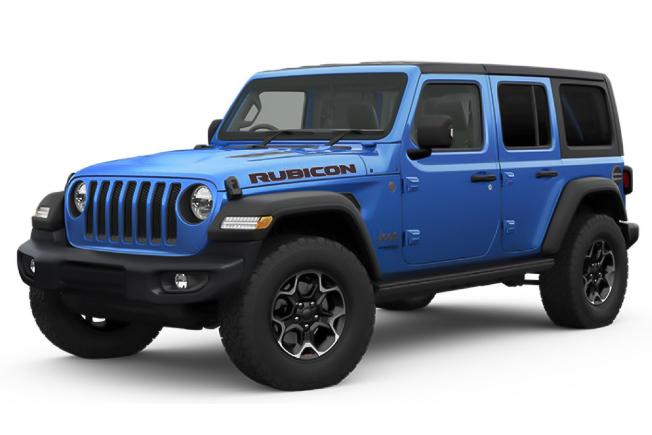
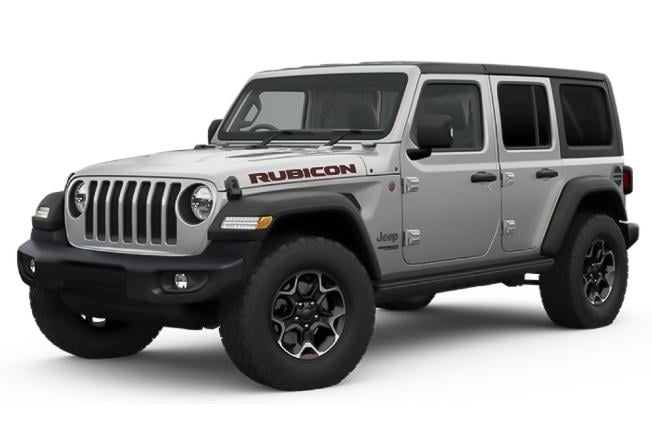
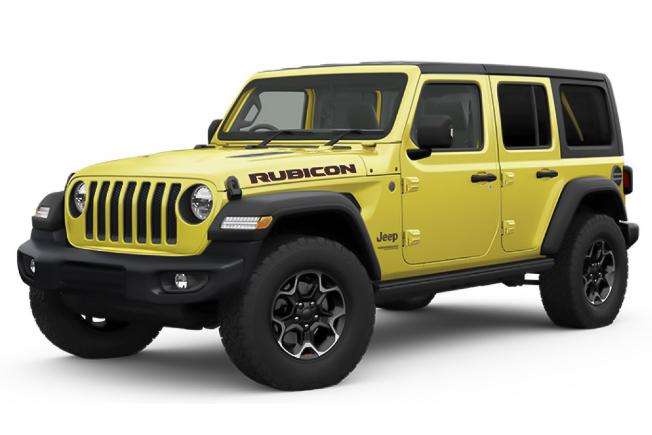
Standard
Premium: ($1175)
The Wrangler wears a three-star ANCAP safety rating based on 2019 Euro NCAP testing – this applies to all variants.
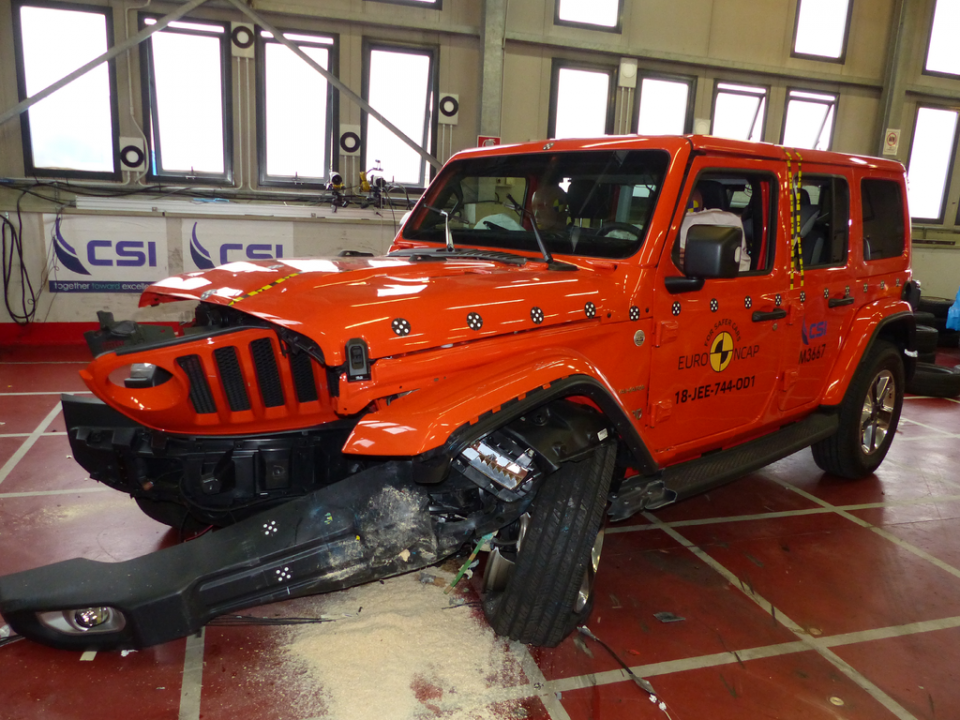
This comes after an initial one-star rating awarded to the initial versions of the current-generation Wrangler that was introduced in April 2019, as the off-roader picked up safety features like autonomous emergency braking (AEB) and bind-spot monitoring across the range.
It managed category scores of 60 per cent for adult occupant protection, 80 per cent for child occupant protection, 49 per cent for vulnerable road user protection and 51 per cent for safety assist.
Hurting the Wrangler’s performance were the absence of lane-keep assist and emergency lane keeping systems, as well as head-protecting side airbags for the rear seats.
While the upgrades to assistance systems bumped up the initial ANCAP safety rating, the company’s then-CEO James Goodwin still knocked various aspects of the Wrangler’s safety package even after the updates.

“These upgrades are welcome, and I commend the local supplier for moving to provide Wrangler buyers in Australia and New Zealand with collision avoidance capability,” Mr Goodwin said in December 2019.
“While a three-star rating is still somewhat shy of the expected five stars, all upgraded models now have the ability to detect and assist with avoiding a crash with another vehicle – both in lower and higher speed scenarios.”
“Unfortunately the upgraded AEB system fitted to updated models is not yet able to detect our most vulnerable road users in pedestrians and cyclists” he continued.
“Consumers should be aware that the structural deficiencies we saw with the originally-tested model such as A-pillar and cross-fascia beam failure, footwell intrusion, high seatbelt loads and excessive pedal movement have not been addressed and remain a risk for occupants,” Mr Goodwin added.
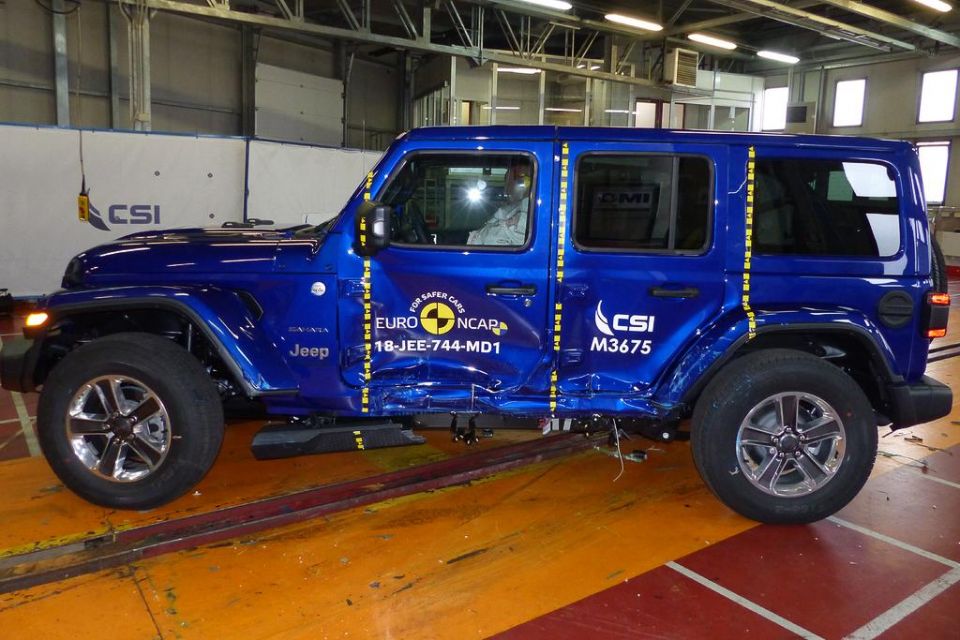
Standard safety features include:
The Jeep range is covered by a five-year, 100,000-kilometre warranty in Australia – whichever comes first.
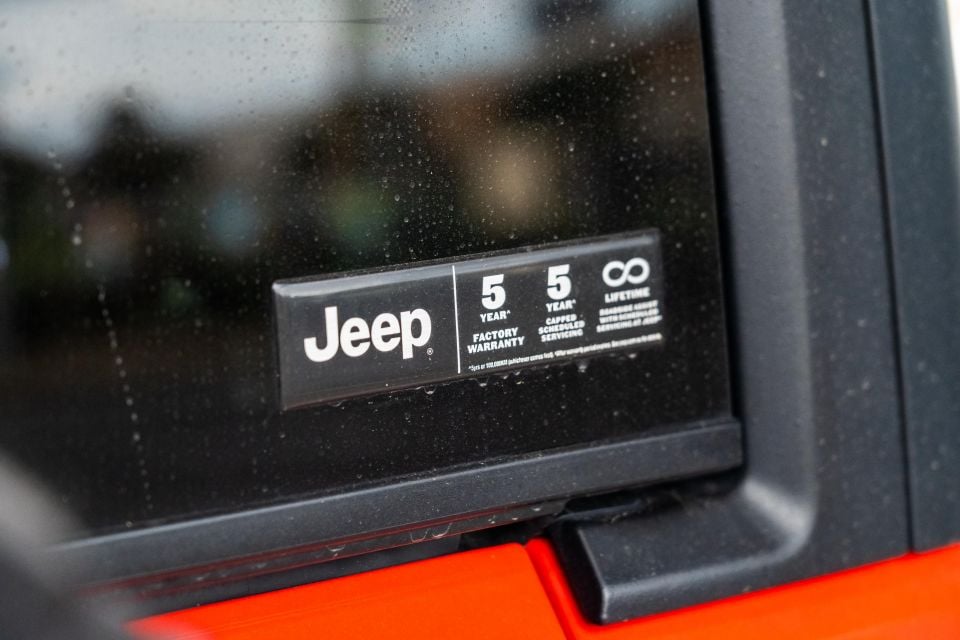
While the five-year window is on par with the industry average, the 100,000km cap is shorter than the unlimited mileage offered by most other brands. You do, however, get 24/7 roadside assistance included for the duration of the warranty period.
Jeep also offers five years of capped-price servicing, with intervals of 12 months or 12,000km for its petrol models.
For the Wrangler, you’ll pay $399 per visit for the first five years, amounting to $1995 for that period. Every time you get your vehicle serviced at a Jeep dealership, you’ll receive an additional 12 months of roadside assistance for the lifetime of your vehicle.
As for real-world fuel consumption, we saw an indicated 11.7L per 100km after nearly 800km of testing, which included plenty of urban commuting mixed in with extended freeway and highway stints. For a big off-roader it’s not terrible, but it’s well up on what you’ll see from a diesel-powered rival in similar conditions.
There’s no questioning the Wrangler’s icon status, but the current one is feeling a little tired in some places.
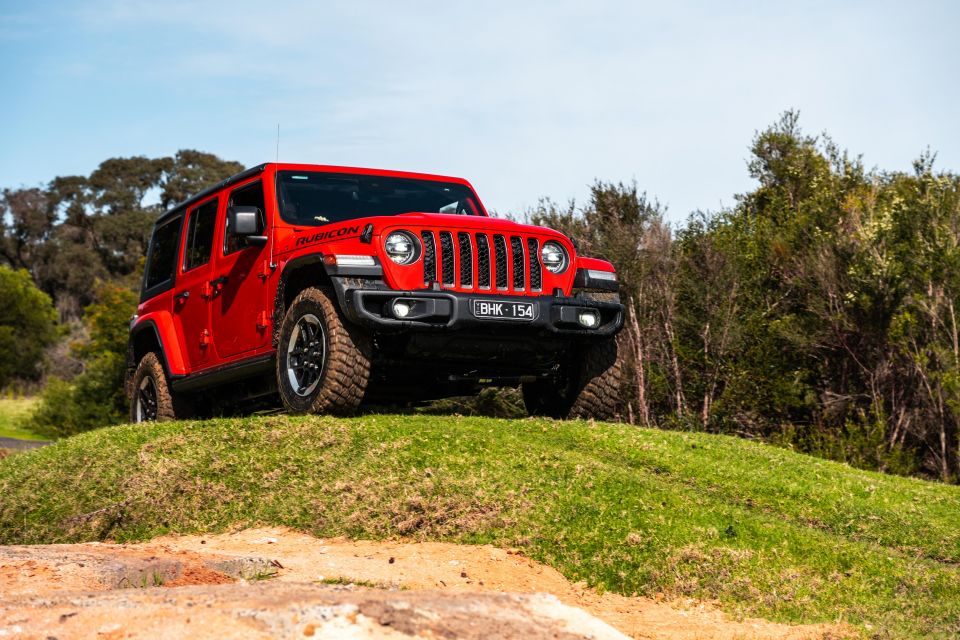
At $90,000 plus on-road costs for the vehicle on test, you’re looking at a minimum $100,000 drive-away for a vehicle that, while rugged, capable and retro styled, is lacking relative to what’s currently on the market – especially for a something that was $12,000 cheaper not all that long ago.
We have to applaud the Wrangler’s persistence with its iconic design and old-school look and feel, as well as its proven capability off road. It’s arguably the Jeep product that’s most true to the brand’s rugged heritage,
However, the ageing engine, poor safety rating and underdone safety spec list, unrefined on-road drive experience and exxy price tag make it hard to recommend to a broad audience.
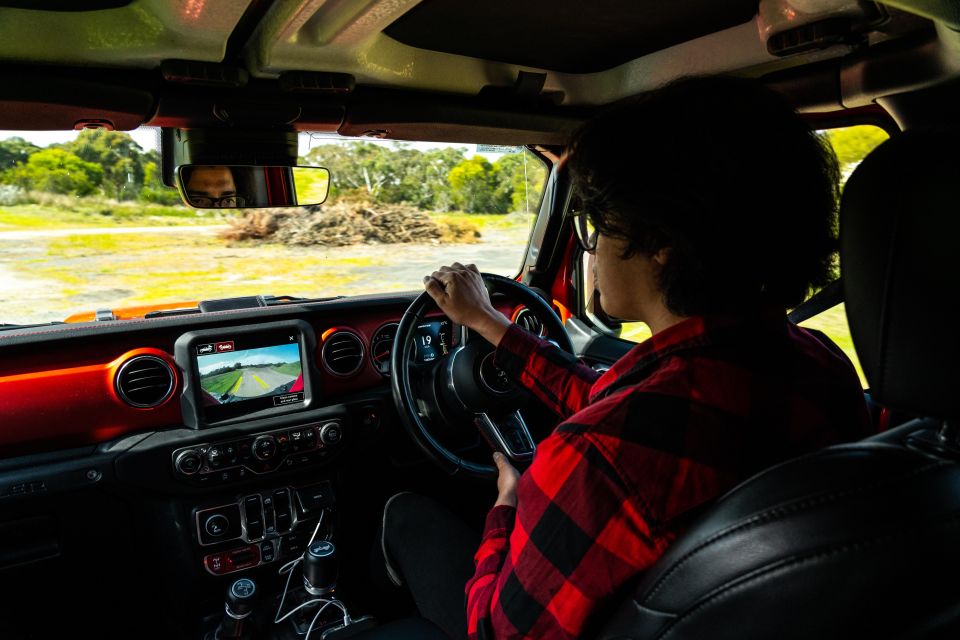
For the same money, you can have the more modern but retro-styled Land Rover Defender, which while not quite as true to the nameplate’s roots, brings the Land Rover badge and the Defender name into the 21st century. It’s also far more tech-laden and luxurious to boot, making it more capable more of the time.
Meanwhile, if you want something that’s a properly old-school 4×4 but hasn’t been ruined by the kids’ tech of today, the Ineos Grenadier shapes as a spiritual successor to the original Land Rover Defender and a viable alternative to this Wrangler Unlimited Rubicon, with the choice of BMW-sourced six-cylinder petrol or diesel power and an almost infinite level of customisation.
If you’re tied to the Wrangler’s charm there’s an updated model on the way that should bring better tech and updated styling, as well as a more premium cabin with better NVH to improve ambience and refinement.

Click the images for the full gallery
MORE: Everything Jeep Wrangler
Where expert car reviews meet expert car buying – CarExpert gives you trusted advice, personalised service and real savings on your next new car.
James Wong is an automotive journalist and former PR consultant, recognised among Australia’s most prolific motoring writers.


Ben Zachariah
7 Hours Ago


Damion Smy
8 Hours Ago
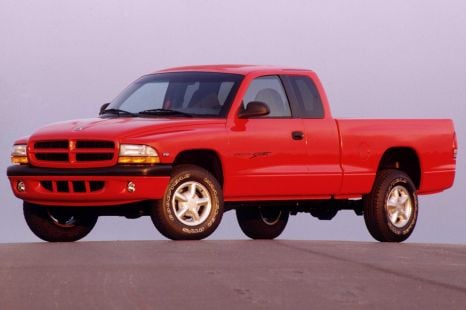

Derek Fung
9 Hours Ago
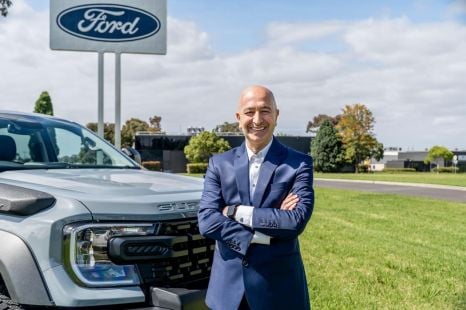

Ben Zachariah
9 Hours Ago
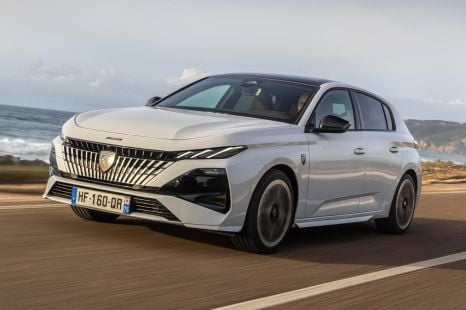

Matt Robinson
15 Hours Ago
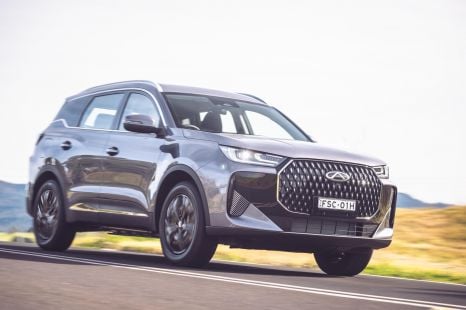

CarExpert.com.au
1 Day Ago